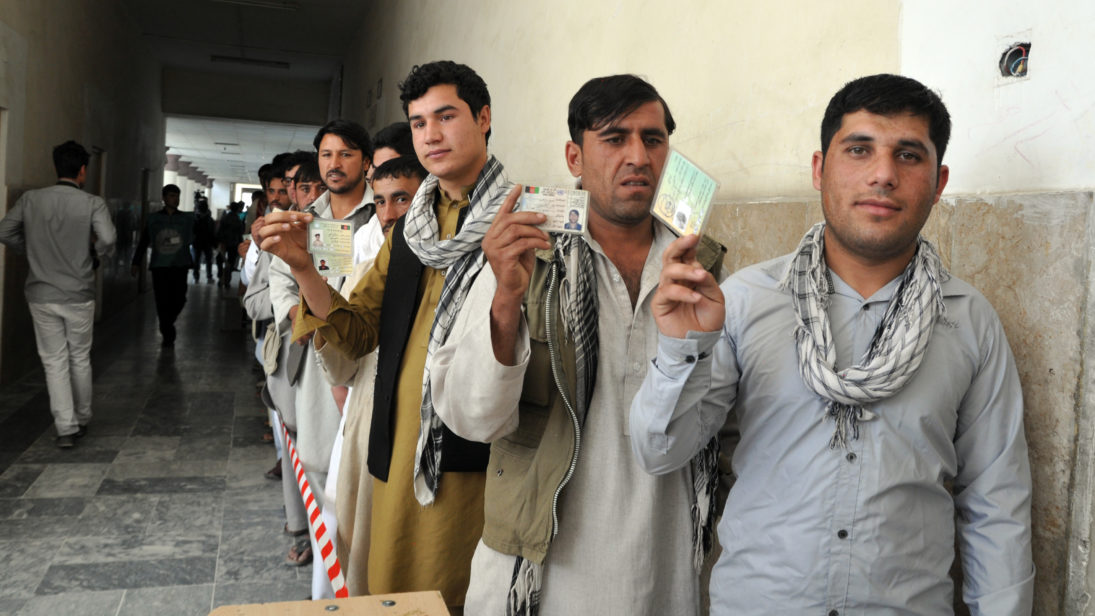
Several key trends in 2018 point toward the gradual entrenchment of democracy in South Asia. While most South Asian democracies are neither theoretically flawless nor operationally perfect, 2018 showed that the region is not just ushering in democracy, but sustaining developments made over years of strife, conflict, and misgovernance.
The history of South Asian democracy has been checkered. Most of the countries in the region are still fragile democracies in a relatively nascent stage. Sri Lanka and India are the only countries in the region with a history of conducting regular elections over the years. But the other six—Afghanistan, Bangladesh, Bhutan, Maldives, Nepal and Pakistan—all underwent the democratic exercise of elections between December 2017 and December 2018. Despite the region’s association with traits of authoritarianism, lagging civil and political rights, and the specter of terrorism and violence, electoral parameters such as voter participation in the electoral system and the growth of party systems present trends of a strengthening democratic consciousness among the citizens of the region.
Voter Participation and Turnout
Citizen participation in the electoral process is an important indicator of the health of a democracy as well as the trust in a democratic system that is capable of delivering on the voters’ interests. Out of the 1.8 billion people that make up the population of South Asia, about 427.76 million people cast ballots last year. There were approximately 9 million registered voters in Afghanistan, 103.8 million in Bangladesh, 438,663 in Bhutan, 262,135 in the Maldives, 15.4 million in Nepal, and 105.95 million in Pakistan.
Most countries have seen increases in voter turnout over time The parliamentary elections in Afghanistan saw about 45.4% voter turnout as opposed to 35.14% in 2010. Official estimates in Bangladesh suggest a massive rise in voter turnout of 80% in comparison to the turnout of 51.37% in 2014. Bhutan’s voter turnout increased from 66.13% in 2013 to 71.46% in 2018. In Nepal, the voter turnout stood at 78.2%, minimally higher from the turnout of 77.6% in 2013. In Pakistan, the voter turnout has been hovering around the halfway mark since the last two elections. In 2013, the turnout was 53.62% while in 2018, it was 50.14%. With some minor exceptions such as the Maldives, voter turnout in these elections in the last year show a consistency, even growth, that bodes well for the region.
Partysystems in South Asia
For countries that are still adopting to the means of democratic governance, the number of political parties engaged in electoral competition suggests that people are investing in their democracies to benefit from a competitive system and give voice to their interests. In Afghanistan, as many as 84 political parties contested the polls as opposed to the 80 registered political parties in 2009. While only 12 political parties took part in the parliamentary elections of 2013-14 in Bangladesh owing to the boycott by the opposition parties, 39 political parties, registered with the country’s election commission, contested in the recent elections in 2018. In Bhutan, the number of political parties decreased from five to four from the last elections, while in Nepal nine major parties won seats in the legislature under the new constitution, down from 30 parties in the previous Constituent Assembly . Pakistan witnessed a total of 120 parties contesting the 2018 elections, while the number of political parties in 2013 was 112. The total number of political parties in these countries projects—although imperfectly—a positive trend of democratic competitiveness among the people, with the parties representing the diverse and multifaceted populations and their various interests. However, most of the smaller parties in countries like Bangladesh, Nepal, and Pakistan failed to obtain enough votes to win seats in these elections.
A Long Way to Go?
South Asia is still far from being a region of liberal democratic attributes. Even developments in countries like India and Sri Lanka raise questions on the nature of constitutional democratic advancement in these nations. The rising trends of majoritarianism and the erosion of constitutional institutions in India have cast shadows on the world’s largest democracy. In Sri Lanka, the constitutional crisis that included the wrongful removal of Prime Minister Ranil Wickremesinghe by President Maithripala Sirisena and his reinstatement after the overturning of Sirisena’s decision by the Sri Lankan Supreme Court led the island nation into a phase of political uncertainty and jeopardized its post-Civil War efforts at achieving peace and development.
In the democratically less-developed countries of the region, the indigenous democratic expression of citizens is confronted by the checkered attributes of South Asia’s past authoritarian regimes, the consolidation of power in the military, and a disregard for civil and political liberties. The people of Pakistan engrossed themselves in the election process, participating in huge numbers in election rallies and using social media as a platform for mobilization. However, the military establishment in Pakistan continues to wield power over foreign and security policy decisionmaking, placing limitations on Prime Minister Imran Khan’s authority as head of state The 2018 Pakistan elections witnessed protests by the citizens against the military establishment for interference in the elections as well. According to the Pakistan Institute of Legislative Development and Transparency, the pre-poll election process had been manipulative and unfair, including a crackdown on the liberties of the media.
In Bangladesh, the recently re-elected Prime Minister Sheikh Hasina is being identified more and more with authoritarian tendencies. The December 2018 elections were marred by widespread violence and crackdown on opposition parties, anti-government entities, and the free press. It led to the death of as many as 17 citizens in election-related violence. Opposition parties were debarred from organizing rallies, while constitutional bodies like the Election Commission were compromised. Sheikh Hasina stifled any form of public dissent, even arresting noted activist Shahidul Alam for his support of protesting students during the anti-government road safety protests earlier last year.
In Afghanistan, although the citizens came out in large numbers, the threat of the Taliban and the violence carried out during the elections and problems of defunct election machinery and mismanagement affected the electoral process in the country. According to different sources, about 28 members of the security forces and 50 civilians died due to the Taliban attacks with more than 400 injured across the country. The murder of the security chief of the province of Kandahar, Gen. Abdul Raziq, led to the postponement of elections in the southern province.
Conclusion
Mired with geopolitical constraints, great power rivalries, regional tensions, national economic and political crises, and sub-national ethnic rivalries, the story of South Asia has seldom been nurtured by the rising democratic consciousness of its citizens and its varied expressions. Although the discourse of democratic development faces multiple obstacles, the roots of democracy have begun conditioning people’s choices in the region. As stated by political scientist Paul Staniland, “South Asia’s experience shows that democracy does not seamlessly advance or uniformly retreat…[its] trajectory shows just how important it is to seize opportunities to fortify liberal democracy when they present themselves and to confront potential dangers before they metastasize.” The survival of South Asian democracy has been and will be dependent on the continuity of these electoral processes.
Image: USAID Afghanistan


